R Pearce
Imported seafood is a reservoir of Enterobacteriaceae carrying CTX-M-encoding genes of high clinical relevance
Pearce, R; Pirolo, M; Goecke, NB; Toppi, V; Good, L; Guitian, J; Guardabassi, L
Authors
M Pirolo
NB Goecke
V Toppi
L Good
J Guitian
L Guardabassi
Abstract
We determined the frequency, genotypes, phenotypes, and mobility of extended-spectrum beta-lactamase (ESBL)encoding genes in Enterobacteriaceae isolated from retail seafood products. Overall, 288 samples of fresh shrimps, catfish and seabass imported from Asia were collected from three supermarket chains in the UK (96 each). After enrichment in MacConkey broth supplemented with cefotaxime, total DNA was screened for the presence of CTXM, SHV and TEM by real-time PCR. Positive samples were cultured on ESBL selective media and presumptive ESBL-producing isolates were confirmed by PCR and identified to the species level by MALDI-TOF-MS. CTX-Mpositive isolates were further characterized by whole genome sequencing (WGS), antimicrobial susceptibility testing, and conjugation experiments. Approximately one in thirteen (7.6 %) seafood products were contaminated with ESBL-producing Enterobacteriaceae. WGS analysis revealed the presence of CTX-M-15 (n = 7), CTX-M27 (n = 7), and CTX-M-55 (n = 7), CTX-M-14 (n = 4) among Enterobacteriaceae isolated from shrimp (n = 21) and catfish (n = 4), and FONA-6 in two Serratia fonticola isolates from seabass. The higher rate of contamination in shrimp could be due to post-harvest contamination due to human handling or washing practices during processing. Half (n = 13) of the CTX-M-producing isolates transferred blaCTX-M to laboratory E. coli via IncA/C (n = 6), IncX2 (n = 4), IncFIIK (n = 1) or non-typeable plasmids (n = 2). All plasmids contained additional resistance genes conferring resistance to antimicrobials used in aquaculture, indicating possible co-selection through the use these antimicrobials. The frequent occurrence of CTX-M-encoding genes of high clinical relevance in imported seafood, particularly shrimp, often on transferrable plasmids, underscores the need for ESBL surveillance on traded seafood, alongside quantitative risk assessment studies aimed at evaluating the potential health risks for consumers who are exposed to these bacteria via consumption of raw seafood.
Citation
Pearce, R., Pirolo, M., Goecke, N., Toppi, V., Good, L., Guitian, J., & Guardabassi, L. (2025). Imported seafood is a reservoir of Enterobacteriaceae carrying CTX-M-encoding genes of high clinical relevance. International Journal of Food Microbiology, 430, https://doi.org/10.1016/j.ijfoodmicro.2025.111063
| Journal Article Type | Article |
|---|---|
| Acceptance Date | Jan 10, 2025 |
| Online Publication Date | Jan 13, 2025 |
| Publication Date | 2025 |
| Deposit Date | Feb 21, 2025 |
| Publicly Available Date | Feb 21, 2025 |
| Journal | International Journal of Food Microbiology |
| Print ISSN | 0168-1605 |
| Publisher | Elsevier |
| Peer Reviewed | Peer Reviewed |
| Volume | 430 |
| DOI | https://doi.org/10.1016/j.ijfoodmicro.2025.111063 |
| Keywords | Antimicrobial resistance; Extended-spectrum beta-lactamase; Aquaculture; Co-selection; EXTENDED-SPECTRUM; ESCHERICHIA-COLI; ANTIBIOTIC-RESISTANCE; BETA-LACTAMASES; RETAIL SEAFOOD; PUBLIC-HEALTH; CHICKEN; ANIMALS; SUSHI |
Files
Imported Seafood Is A Reservoir Of Enterobacteriaceae Carrying CTX-M-encoding Genes Of High Clinical Relevance
(862 Kb)
PDF
Licence
http://creativecommons.org/licenses/by/4.0/
Publisher Licence URL
http://creativecommons.org/licenses/by/4.0/
Version
VoR
You might also like
Downloadable Citations
About RVC Repository
Administrator e-mail: publicationsrepos@rvc.ac.uk
This application uses the following open-source libraries:
SheetJS Community Edition
Apache License Version 2.0 (http://www.apache.org/licenses/)
PDF.js
Apache License Version 2.0 (http://www.apache.org/licenses/)
Font Awesome
SIL OFL 1.1 (http://scripts.sil.org/OFL)
MIT License (http://opensource.org/licenses/mit-license.html)
CC BY 3.0 ( http://creativecommons.org/licenses/by/3.0/)
Powered by Worktribe © 2025
Advanced Search
